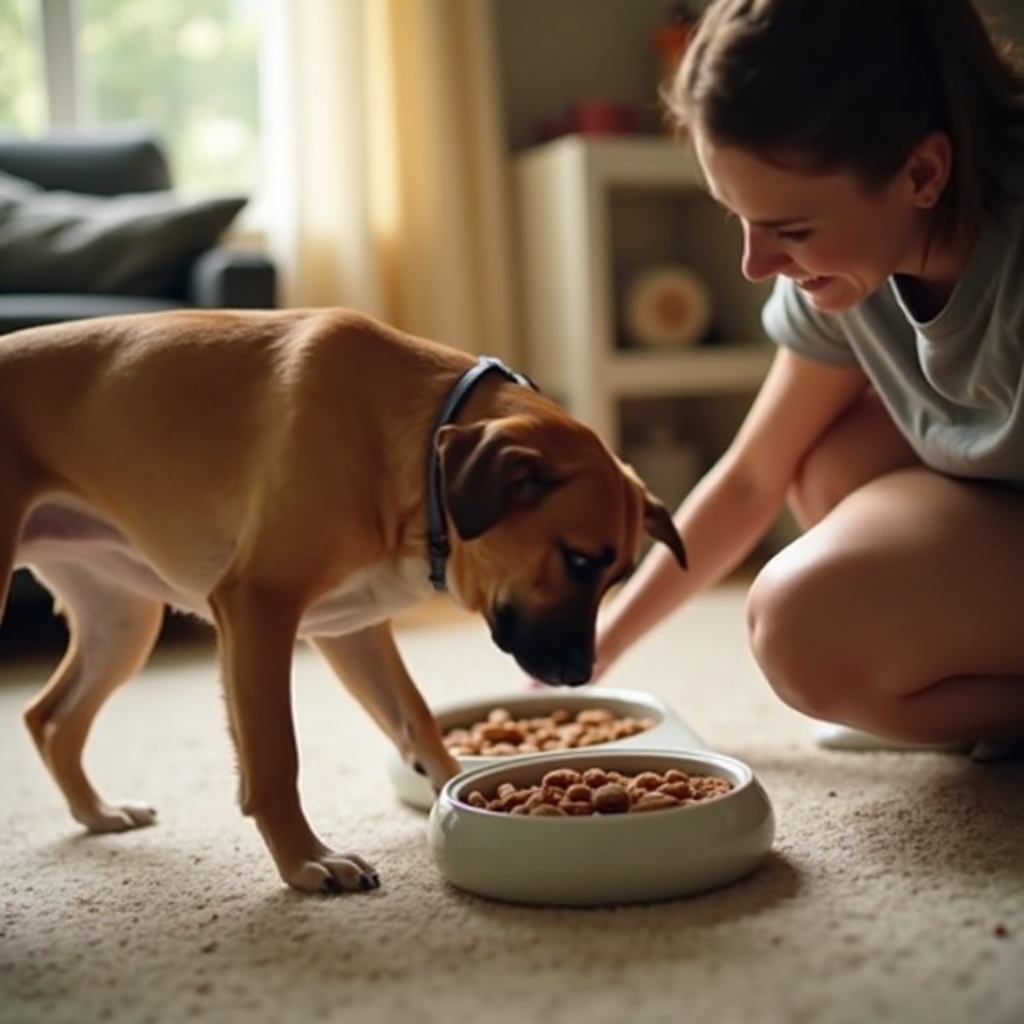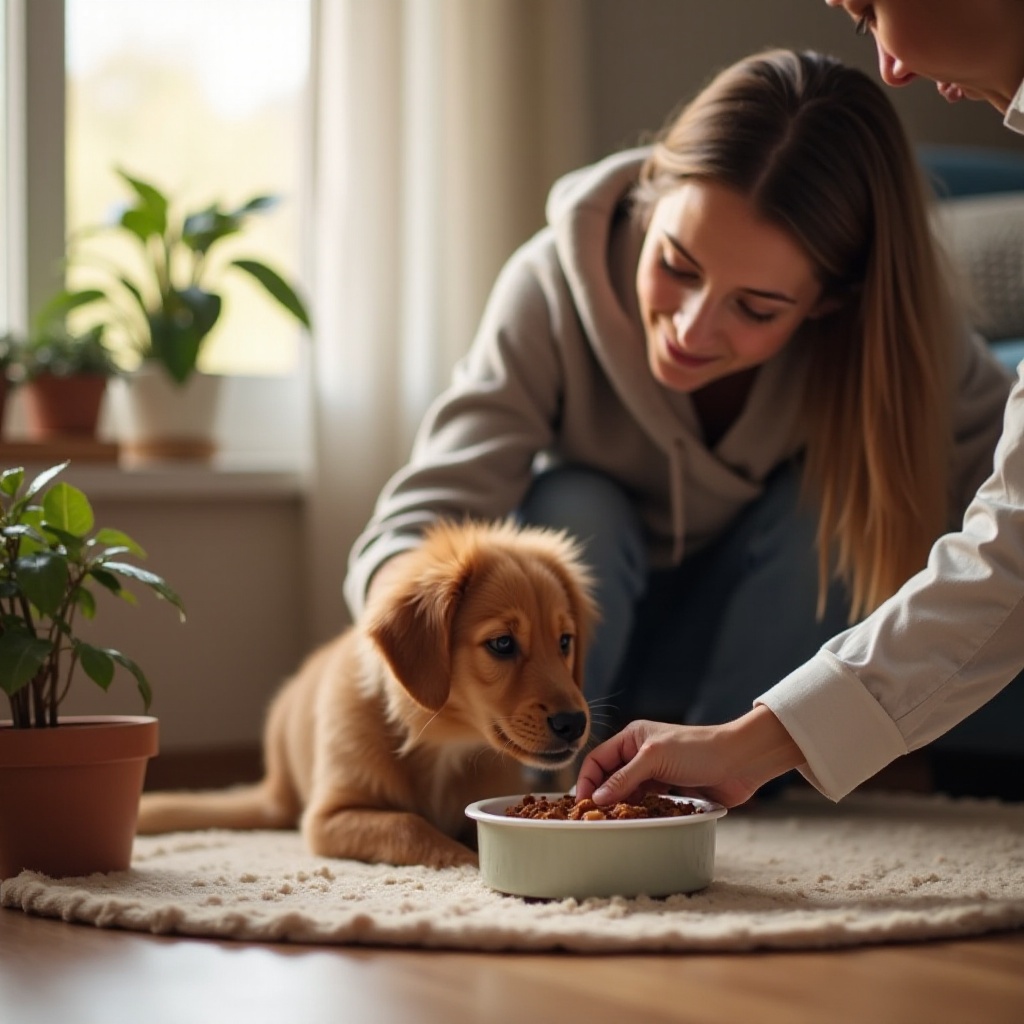Introduction
Feeding time can often resemble a race where many dogs gobble their food at breakneck speeds. This habit isn’t just a quirky idiosyncrasy; it’s a behavior that can lead to various health problems if not addressed. Finding strategies to make your dog eat slower can not only improve their digestion but also prolong their happiness and well-being. Below, we discuss why dogs eat too fast, the risks associated, and effective techniques to curb this behavior.

Why Dogs Eat Too Fast
Dogs can eat quickly due to various reasons, ranging from evolutionary instincts to competition in multi-dog households. In the wild, dogs and their ancestors had to consume their meals quickly to avoid losing it to other predators. This instinct, though unnecessary for domesticated pets, can still manifest. Another common cause is the competitive atmosphere created when multiple dogs are fed together, making each dog eat more rapidly to finish before another.
Additionally, some dogs have developed this habit due to past experiences of food scarcity. Dogs that have faced inconsistent food availability develop a tendency to eat whatever is offered rapidly, fearing that the next meal might not come for a long time. These psychological factors, when recognized, can help pet owners identify the root cause and address it effectively.
Understanding why your dog eats fast is a crucial first step toward implementing the right techniques to help them eat at a healthier pace.
Health Risks of Fast Eating
Fast eating can expose your dog to several health risks that can affect their quality of life. One significant concern is bloating, or Gastric Dilatation-Volvulus (GDV). Bloating occurs when a dog swallows a lot of air along with their food, causing the stomach to expand and potentially twist. This condition is life-threatening and requires immediate veterinary attention.
Another risk is the ingestion of non-chewed food, which can lead to choking. When dogs don’t chew their food thoroughly, large chunks can get stuck in their throat, causing blockages that might necessitate emergency intervention. Moreover, rapid consumption leads to inefficient digestion, leading to stomach discomfort and nutrient absorption issues.
Additionally, some dogs develop behavioral issues such as food aggression. A turbulent eating environment can lead to increased anxiety and aggression around feeding times, making the situation hazardous for both pets and their owners. A well-monitored and slower eating pace can mitigate these health concerns.
Behavior Modification Techniques
Transitioning your dog to eat slower begins with modifying their behavior. There are several approaches to this, all aimed at breaking their rapid eating habit.
Scheduled Feeding Times
Establishing a predictable feeding routine helps your dog anticipate their meals and reduces anxiety around food. When a dog knows that they will be fed at certain times each day, they’re less likely to feel the need to race through their meal. Consistency is crucial here; feeding your dog at the same times daily can result in a calmer and more controlled eating pace.
Portion Control
Overfeeding can exacerbate rapid eating habits. Dividing your dog’s daily food into smaller, more frequent meals can manage their hunger more effectively and prevent them from feeling the need to gulp down an overwhelming amount at once.
- Split the dog’s daily food intake into 3 or 4 smaller meals.
- Avoid free feeding, where food is left out all day.
Smaller portions not only aid in slowing down your dog’s eating pace but also contribute to better digestion and weight management.
Positive Reinforcement
Encouraging and rewarding slower eating can reinforce this behavior effectively. Praise your dog or offer small treats for every bite they take at a slower pace.
- Offer verbal praise or a gentle pat.
- Use smaller treats that your dog enjoys.
Positive reinforcement teaches your dog that eating slower is a rewarding experience, gradually encouraging them to adopt this pace consistently.
Interactive Feeding Solutions
Another effective approach includes implementing interactive feeding solutions that make mealtime more engaging and slower-paced.
Slow Feed Bowls
Slow-feed bowls are designed with raised patterns or obstacles that prevent dogs from gulping down their food quickly. The shapes inside these bowls require the dog to eat around them, effectively prolonging their meal.
- Choose a bowl with a suitable pattern and size for your dog.
- Introduce the bowl gradually to avoid frustration.
Puzzle Feeders
Puzzle feeders are excellent for stimulating your dog’s mind while regulating their eating speed. These feeders come in various designs, requiring the dog to solve a mini-puzzle to access their food.
- Start with simpler puzzles and gradually increase the complexity.
- Supervise initial uses to ensure your dog doesn’t become discouraged.
Treat-Dispensing Toys
Treat-dispensing toys serve a dual purpose: they provide entertainment and extend feeding times. As your dog nudges or plays with the toy, small amounts of food are dispensed.
- Fill the toy with kibble and observe how your dog interacts with it.
- Increase the challenge as your dog becomes more adept at using it.
DIY Methods to Slow Down Eating
Beyond commercial products, there are simple, cost-effective DIY methods to slow your dog’s eating pace.
Muffin Tin with Balls
Using a muffin tin, you can create an effective slow-feeding setup. Place dog food in each cup and cover some with tennis balls.
- Divide the food into multiple cups.
- Place a tennis ball in some of the cups to create obstacles.
Spread Food on a Baking Sheet
Spreading your dog’s food on a baking sheet ensures your dog has to move around to eat, which naturally slows their eating.
- Spread the kibble thinly and uniformly.
- Avoid using elevated surfaces that the dog can knock over.
These DIY techniques make excellent, accessible alternatives to store-bought slow feeders.

Long-Term Monitoring and Training
Ultimately, the key to success is consistent monitoring and training over the long term. Regularly observe your dog’s eating habits and adjust strategies as needed to ensure they are effective. Patience is essential; changing a dog’s ingrained habits takes time and consistent effort.
Record any changes in your dog’s behavior and consult with a veterinarian if necessary. Their insights can help tailor specific strategies suited to your dog’s needs.

Conclusion
With a mix of scheduled feedings, interactive feeding solutions, and consistent behavior modification, you can successfully slow down your dog’s eating pace. These methods not only promote better health and digestion but also contribute to your dog’s overall well-being and happiness.
Frequently Asked Questions
What should I do if my dog refuses to use a slow-feed bowl?
If your dog refuses to use a slow-feed bowl, consider trying different designs or using puzzle feeders and treat-dispensing toys. Gradual introduction and praise can also help.
How can I tell if my dog is eating too fast?
Signs of rapid eating include gulping food without chewing, choking, and frequent burping. Observe feeding times and consult your vet for guidance if needed.
Are there any medical conditions causing my dog to eat quickly?
Yes, conditions like diabetes and high metabolism can make dogs feel hungrier and eat quickly. Consult your vet to rule out medical issues.
